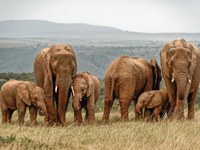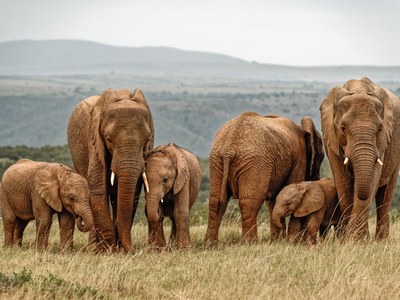Focus: Illegal wildlife trafficking - Killing by numbers
May 17, 2017
Michelle Owen of TRAFFIC, the wildlife trade monitoring network, is responsible for the ROUTES (Reducing Opportunities for Unlawful Transport of Endangered Species) Partnership.
The ROUTES partnership, in collaboration with a number of UFW Taskforce members, has been looking at the air transport sector: “There are different ways in which wildlife is trafficked, so predominantly live animals or fragile animals are carried on the person, but you also get turtles, dead wildlife or by-products of wildlife being put through air cargo.
“And there are different techniques. For passengers, it is very much hidden on the person, and part of the problem is that the security screening is not necessarily looking for wildlife; they are looking for weapons and explosives. So even if something gets scanned it may not be picked up because it is not one of the flags. So that is one of the concerns.
“You get things being put through with falsified paperwork, or they are deliberately misdeclared. So you may get pangolin scales going through listed as plastics or you may get a legal shipment of goods hiding illegal products inside it.”
One ruse employed by traffickers is to have complicated transit routes, changing the origin on the paperwork and exploiting softer, less enforced airports to move around the world in order to disguise the link between wildlife origin country and the destination consumer country. For example, starting from Africa to South America, back up to Europe and then finally down to Asia.
Tigers, ivory, rhino horn and baby chimpanzees are the best know victims of the poachers, but there are some unlikely endangered species, for example the European eel, which is a delicacy in parts of Asia.
Again, what should the air cargo ‘eyes and ears’ on the ground be on the alert for? Says Owen: “One key thing is to realise that a lot of the flags that you get for other suspicious activity around drugs and counterfeit goods are very similar to those you get for wildlife.”
In addition to mismatched weights, Owen has this advice: “If you are seeing products being moved into a country where there is no reason for that import to happen, such as rice being sent to Asia, why would that be? Those kinds of misdeclared type goods should be raising flags.
“Also, look for suspicious types of packaging. If you have got air holes in boxes, why are they needed? And the paperwork: is it legal and does it look like it’s been copied? Does it have the proper import export permits associated with it?”
There is also an issue with freight forwarder consolidations, when traffickers supply part of the load with illegal goods: “If you do find something on import, it is very difficult to trace it back and actually see who was the culprit at the beginning of the chain,” says Owen.


